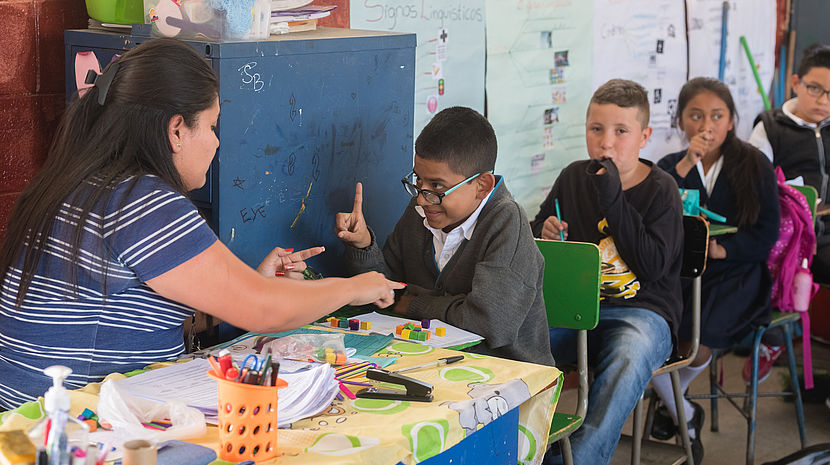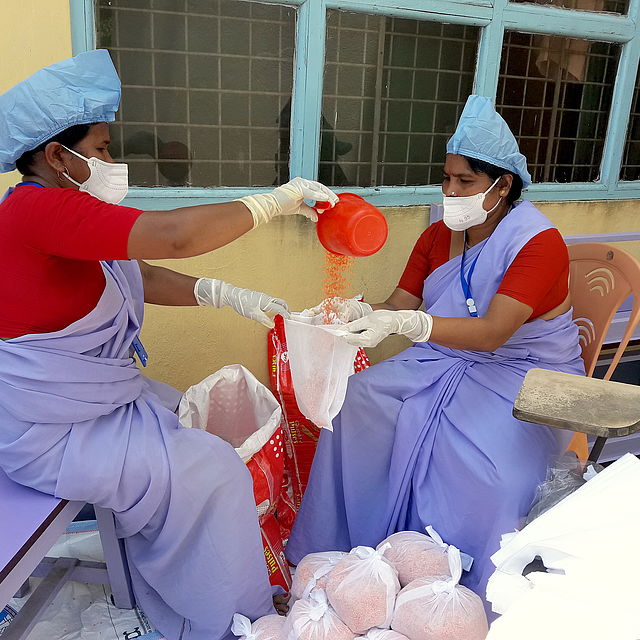CBM Celebrates International Day of Sign Languages 2020

Wednesday 23rd September 2020 commemorates International Day of Sign Languages and the start of International Week of the Deaf. These two important initiatives aim to raise awareness about the deaf community.
The International Week of the Deaf (IWD) first began in Rome, Italy in 1958 by members of the World Federation for the Deaf (WFD). The global Deaf community celebrate IWD during the third week of September every year. There will be many varied activities by Deaf communities and people involved in their lives. WFD encourage professionals, family members, sign language interpreters, members of the public as well as stakeholders like national governments, human rights organisations, and Organisations of Disabled People (OPDs). This year the celebration will be celebrated 21st-27th September. The overall theme is Reaffirming Deaf People’s Human Rights, with a sub-theme for activities for each day of the week as follows:
- Monday 21 September 2020 - Sign Languages
- Tuesday 22 September 2020 - Inclusive Sign Language Environments
- Wednesday 23 September 2020 - International Day of Sign Languages - Sign Languages Are for Everyone!
- Thursday 24 September 2020 - The Legal Recognition of National Sign Languages
- Friday 25 September 2020 - Equal Opportunities for All Deaf People
- Saturday 26 September 2020 - Deaf Leadership
- Sunday 27 September 2020 - I sign for Human Rights!
WFD call on all stakeholders and members to promote the rights of deaf people. You can affirm your support for full human rights for all deaf people by signing the WFD Charter on Sign Language Rights for All!
23rd September: International Day of Sign Languages
This day raises awareness about the fact that sign languages are natural languages for deaf people. National sign languages are increasingly being recognised as fully-fledged languages with the same linguistic make up as a spoken language. All over the world more than 70 million deaf people use sign language as their native language. By communicating with national sign languages deaf people can share a common culture and identity.
Throughout the pandemic we are living though globally, sign language interpretation has been an aspect of public briefings in many countries. This has been the achieved of years of advocacy and awareness raising through eh activities of IWD over the years. The UN CRPD recognises sign languages as having equal status with spoken languages. Member States are obliged to recognise the linguistic identity of deaf people and their communities.
There is also an international sign, which is used by deaf people in international meetings and informally when travelling and socialising.
How CBM supports sign language in its work
CBM supports various programmes promoting the rights of deaf people, sign language and access to education within its initiatives, including education, mental health, ear and hearing care and community-based inclusive development. CBM adopts a rights-based, disability-inclusive development approach, ensuring disability representation, gender equality and safeguarding in all its work.
Throughout this pandemic, CBM has provided sign language interpreters and / or real-time captioning as required for visits or meetings (internal and external) whenever required, according to individual needs.
CBM supports inclusive education programmes of deaf children. It also supports Schools for Deaf children in becoming centres of inclusion and or supporting inclusion for deaf children in mainstream schools. In some countries we have examples of technical and vocational education centres employing deaf teachers with for training deaf and hearing young people in the same class.
CBM supports various education programmes where deaf and hearing children attend the same school and where individualised communication support is provided.
This year partners and country offices have raised awareness about the need for communication access for people whoa re deaf, hard of hearing or deafblind. This has been achieved in several education partners projects around the world as follows:
- Ensuring that classes taught online have sign language and supporting some State Ministries of Education in ensuring that online teaching and learning resources are accessible to all learners, including close captioning / sign language interpretation.
- Creating a video for deaf people about how to mitigate the effects of COVID-19, recognising symptoms and what do if you suspect if you have caught the virus
- Schools becoming centres for food distribution
- Supporting internet connection in rural areas
- Advocating and working with local government to ensure that sign language communication is available for public awareness, along with clear visual information
- Community Based Inclusive Development workers / volunteers visiting families to ensure that deafblind or deaf children are able to continue their education even when schools were closed
Sign language access during Covid-19
This year we can report about the successful advocacy by the Filipino Deaf Community ensuring sign language access for deaf people during Covid-19. The Filipino Sign Language (FSL) was recognised as an official sign language by law in 2018. The law mandates for the provision of qualified sign language interpreters and the establishment of a system of standards for sign language interpreting, particularly in education, justice, health, work, media, and all other government transactions and services. Formal discussions on the law's Implementing Rules and Regulations have only been reinitiated this August 2020 as a result of the Filipino Deaf Community’s lobbying.
Lockdown began in the Philippines on 17th March after several positive cases were identified. The lockdown happened suddenly and included erecting barricades and a curfew. Most deaf people were left confused and left behind in access to communication. They did not know what they needed to do. However, the Deaf Community soon mobilised the FSL Access Team for COVID-19, with deaf and hearing members. It is the only such team in the world and ensures accessibility to any information and services related to COVID-19. Within a month of Team's lobbying and negotiations led to:
- insets were inserted in daily programming of one public national TV station leading to regular sign language interpretation on TV news broadcast and live stream public information by May,
- a team of Deaf people and health workers available for remote consultation via SMS / video link
- COVID-19 terminology translated into FSL
- easy to understand infographics about the virus
- recognition of sign language interpreters as frontline workers
- ensuring that the National Broadband Plan provides reliable and high-volume support for online video streaming in compliance with the Filipino Sign Language Act;
- the establishment of a system of standards for Filipino Sign Language interpreting, and
- a directive to the Phil Statistics Authority, National Disaster Council, Local Governments and Department of Health on disaggregated demographics
Moving forward they are already being active in preparing for the ‘New Normal’ in education and daily lives with an emphasis on accessibility to information on and offline.
Read more about our work during the Coronavirus pandemic

- CBM featured on Devex - Remaining Agile and Competent amid the COVID-19 crisis
- COVID-19 Matrix to provide guidance on possible action points in community development and mobilization in relation to COVID-19 preparedness and response
- Guidance note for COVID-19 to support our eye health partners and communities they serve, in their efforts to combat this global health crisis
- Policy paper on lessons learnt from the Coronavirus crisis for the implementation of sustainable development
- Have a look at our work in Africa (Nigeria, Uganda, Cameroon, Ethiopia) and Asia (Pakistan, Vietnam, Bangladesh, India).